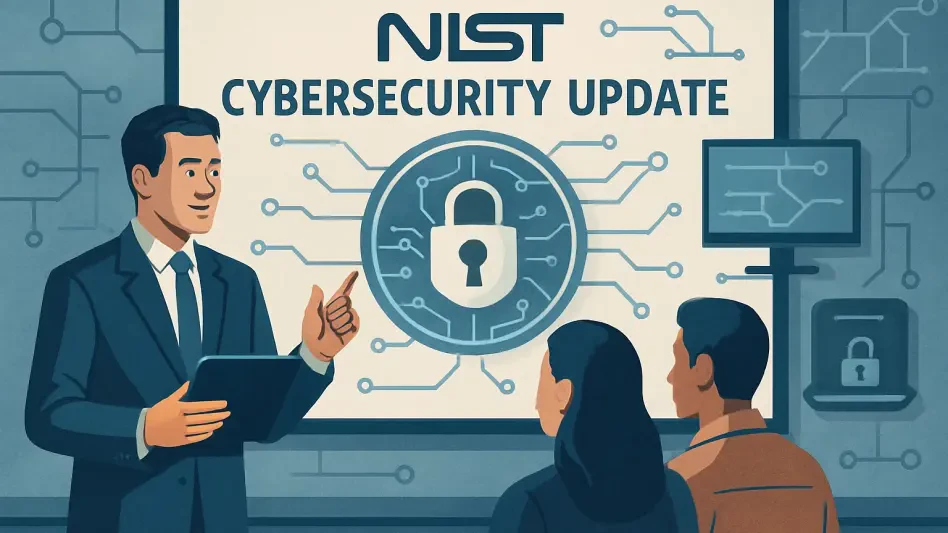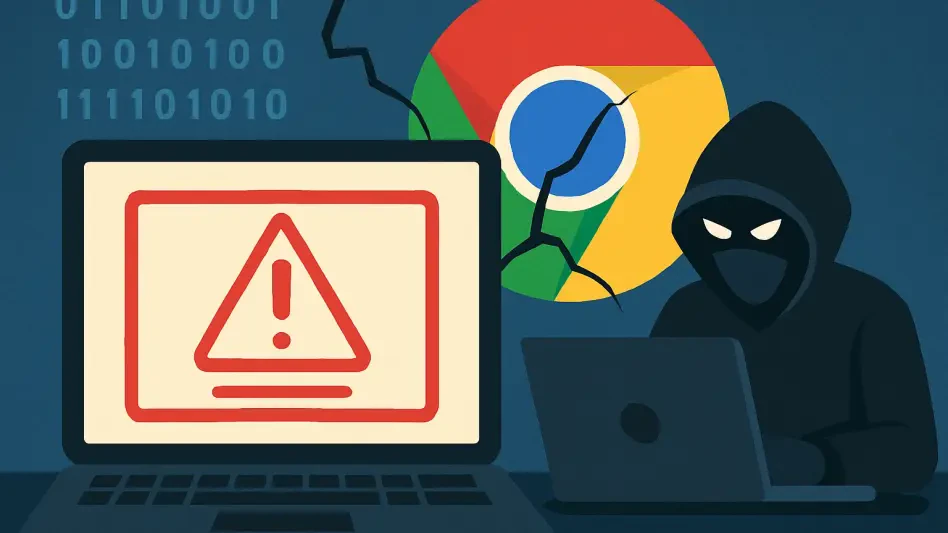In an era where cyber threats are becoming increasingly sophisticated and pervasive, the National Institute of Standards and Technology (NIST) has taken a significant step forward by updating its foundational publication, Security and Privacy Controls for Information Systems and Organizations, commonly known as NIST SP 800-53. This latest revision, Release 5.2.0, arrives as a critical tool for organizations across government, business, and critical infrastructure sectors, aiming to fortify their defenses against an ever-evolving digital threat landscape. With a sharp focus on software maintenance and patch management, the update addresses the urgent need to secure internet-exposed systems while ensuring operational stability. Guided by NIST computer scientist Victoria Pillitteri, these revised controls align with national cybersecurity priorities set forth in recent executive orders, emphasizing a proactive approach to risk mitigation. This article delves into the key aspects of the update, exploring how it equips organizations to navigate modern cybersecurity challenges with resilience and precision.
Building Security from the Ground Up
The updated NIST SP 800-53 places a strong emphasis on embedding security and resiliency into the very foundation of software development. One of the standout additions, the Design for Cyber Resiliency (SA-24) control, underscores the importance of creating systems that are not only resistant to attacks but also capable of enduring and recovering from them without losing critical functionality. This forward-thinking approach acknowledges that cyber incidents are often inevitable in today’s interconnected world. Instead of merely focusing on prevention, the controls encourage designing software with survivability as a core principle. For organizations, this means rethinking traditional development practices to prioritize long-term system integrity, ensuring that even in the face of a breach, essential operations can continue. This shift is particularly vital for sectors like critical infrastructure, where downtime can have catastrophic consequences, and it sets a new standard for building robust digital environments.
Beyond the design phase, the update also pushes for a comprehensive approach to software lifecycle management with security at its heart. Developers are urged to anticipate potential threats during the creation process, integrating protective measures that can adapt to emerging risks. This is not just about coding for today’s threats but preparing for tomorrow’s challenges, a mindset that requires collaboration between developers, security teams, and organizational leaders. The controls provide actionable guidance on how to weave security into every stage, from initial planning to deployment, reducing vulnerabilities before they can be exploited. For businesses and agencies, adopting these principles can significantly lower the risk of costly breaches while fostering trust in their systems. Moreover, this focus on resiliency aligns with broader industry trends toward proactive cybersecurity, ensuring that organizations are better equipped to handle the unpredictable nature of cyber warfare in a digital age.
Tackling the Patch Management Challenge
Patch management emerges as a central pillar in the NIST update, reflecting the critical need to address vulnerabilities in software that is often directly exposed to the internet. With attackers frequently targeting these weak points, the revised controls stress the importance of deploying updates swiftly to close gaps that could be exploited. However, speed must be balanced with caution, as hasty patching without adequate testing can lead to operational disruptions or introduce new issues. The guidance encourages a meticulous approach, advising organizations to evaluate not only the specific component being updated but also its interactions within the larger system. This holistic perspective helps mitigate risks that might cascade through interconnected networks, ensuring that a fix in one area doesn’t create problems elsewhere. For many entities, this balanced strategy is essential to maintaining both security and functionality in high-stakes environments.
Delving deeper into patch management, the update provides practical frameworks for achieving this balance between urgency and thoroughness. Organizations are encouraged to establish robust testing protocols before rolling out updates, ensuring compatibility and stability across their systems. This is particularly relevant for industries managing vast, complex infrastructures where a single misstep can have widespread repercussions. Additionally, the controls highlight the importance of continuous monitoring post-deployment to detect any unintended consequences of a patch. By adopting such rigorous practices, entities can shrink the window of opportunity for attackers while safeguarding their operational integrity. This focus also serves as a reminder that patch management is not a one-time task but an ongoing process requiring vigilance and adaptation. As cyber threats evolve, the ability to manage updates effectively becomes a cornerstone of a resilient cybersecurity posture, protecting sensitive data and critical services from compromise.
Strengthening Incident Response Capabilities
A notable advancement in the NIST update is the enhancement of incident response and problem resolution mechanisms, designed to help organizations recover swiftly from security events. The introduction of controls like Logging Syntax (SA-15) standardizes the way security events are documented, enabling faster and more accurate reconstruction of incidents through automated processes. This standardization is a game-changer for teams tasked with analyzing breaches, as it reduces the time spent deciphering disparate data formats and allows for quicker identification of attack patterns. For organizations dealing with frequent or complex cyber incidents, this control offers a streamlined path to understanding what went wrong and how to prevent recurrence. The emphasis on automation also reflects a broader industry shift toward leveraging technology to handle the scale and speed of modern threats, ensuring that response efforts are both efficient and effective.
Complementing this, the Root Cause Analysis (SI-02(07)) control mandates a deeper investigation into why software update failures or security incidents occur, pushing for corrective actions that address underlying issues rather than just symptoms. This proactive stance shifts the focus from merely reacting to problems to preventing them in the long term, fostering a culture of continuous improvement within organizations. By identifying and resolving root causes, entities can avoid repeated disruptions and build more robust systems over time. This approach is especially critical in environments where even minor failures can escalate into major crises, such as in government or healthcare sectors. The updated controls provide a structured methodology for conducting these analyses, ensuring that lessons learned are systematically applied to future operations. As a result, organizations can strengthen their defenses, turning past incidents into opportunities for enhancing their cybersecurity framework and operational resilience.
Adapting Standards to a Fast-Evolving Threat Landscape
Keeping pace with rapidly changing cyber threats is a key priority in the NIST update, showcasing a commitment to agility in standards development. As noted by Victoria Pillitteri, cybersecurity guidelines must evolve “at the pace of technology” to remain relevant in a dynamic digital environment. This philosophy is evident in the streamlined processes for updating controls, ensuring that guidance reflects the latest threat intelligence and technological advancements. The update also introduces a real-time public commenting system, allowing stakeholders to provide immediate feedback on proposed changes. This transparent approach ensures that the controls are practical and grounded in real-world needs, benefiting a wide range of users from small enterprises to large agencies. Such adaptability is crucial as attackers continually refine their tactics, requiring defenses that can evolve just as quickly to counter new risks.
Further supporting this agility, the updated catalog is available in machine-readable formats like OSCAL and JSON, facilitating easier integration into diverse organizational systems. This accessibility allows for automated compliance checks and faster implementation of security measures, saving valuable time and resources. For many entities, especially those with limited cybersecurity budgets, these formats lower the barrier to adopting robust controls, making high-level protection more attainable. The focus on transparency and usability also fosters collaboration across sectors, as stakeholders can engage directly with NIST to shape future updates. This trend toward dynamic, responsive standards development mirrors the broader cybersecurity community’s recognition that static guidelines are no longer sufficient. By prioritizing flexibility and stakeholder input, NIST ensures that its controls remain a vital tool for safeguarding systems against the unpredictable nature of cyber threats in today’s interconnected world.
Connecting Policy with Practical Implementation
The updated NIST SP 800-53 goes beyond theoretical guidance by bridging the gap between policy and actionable practice, ensuring that organizations can apply these controls effectively. Detailed implementation examples and revised discussion sections for existing controls provide clarity on how to adapt the guidance to various contexts, whether for a small business or a sprawling government agency. This practical focus is essential for entities that may lack the resources or expertise to interpret complex standards independently. By offering concrete steps and real-world scenarios, NIST helps demystify the process of securing systems, making it more approachable for diverse users. This approach also ensures that the controls are not just a checklist but a living framework that can be tailored to specific operational needs, enhancing their relevance across industries.
Additionally, the update integrates software maintenance with broader enterprise risk management strategies, aligning with frameworks like the Cybersecurity Framework (CSF) 2.0 to address emerging cyber risks holistically. This interconnected perspective recognizes that software security cannot be isolated from overall organizational resilience, encouraging a systems-thinking approach to cybersecurity. For leaders, this means aligning patch management and incident response with strategic goals, ensuring that security efforts support business continuity and mission objectives. The emphasis on integration also prepares organizations for future challenges by linking tactical controls with long-term planning. As cyber threats continue to blur the lines between technical and strategic domains, this comprehensive guidance equips entities to navigate complexities with confidence. Ultimately, NIST’s focus on translating policy into practice lays a strong foundation for organizations to protect their digital assets while adapting to an ever-shifting threat environment.








